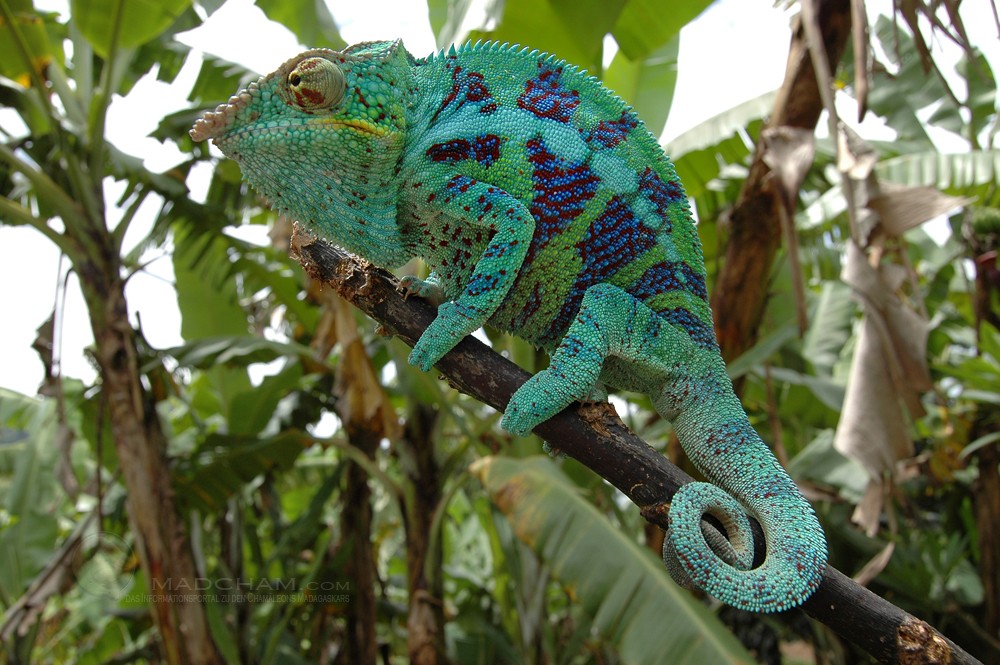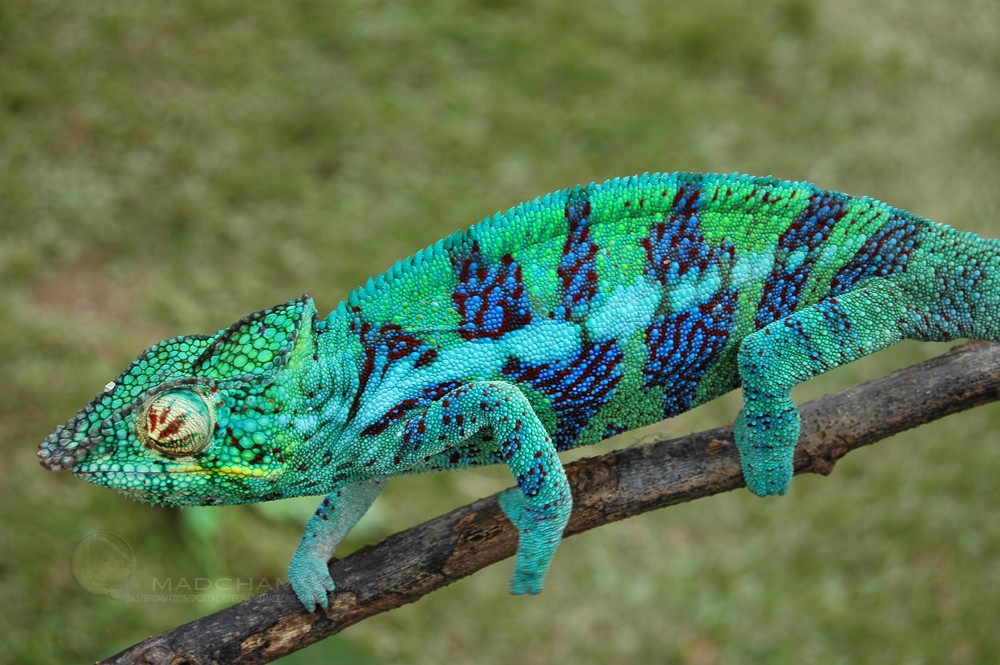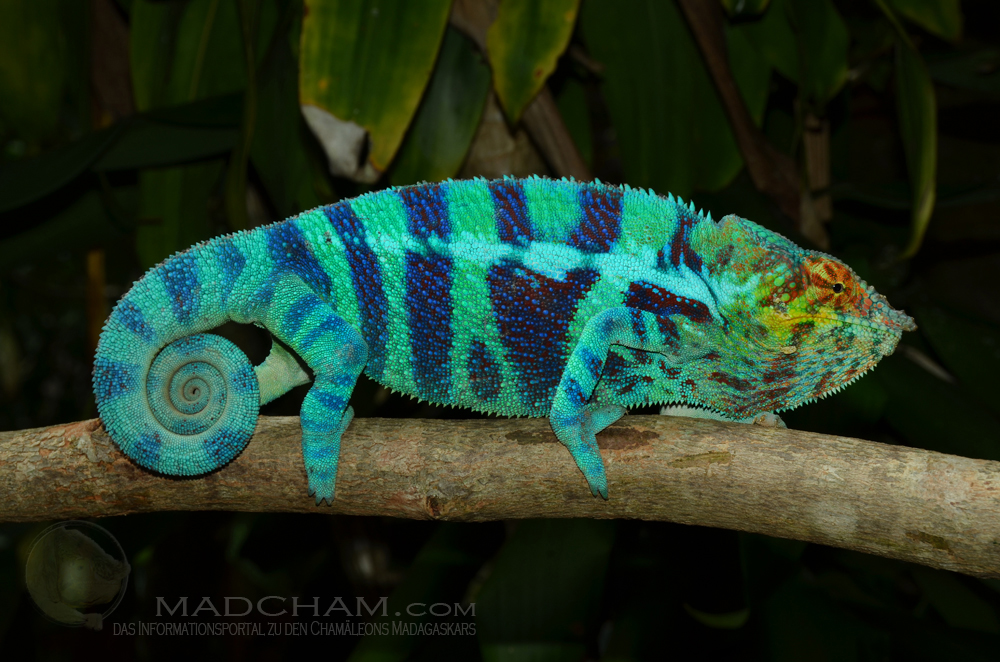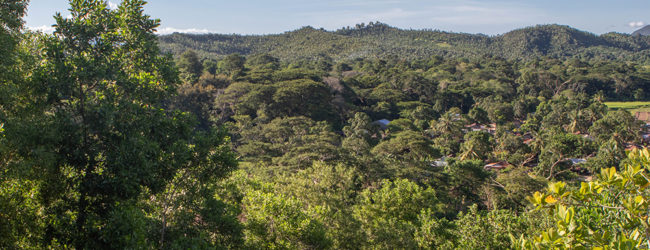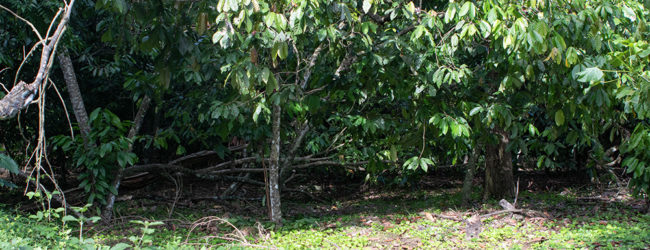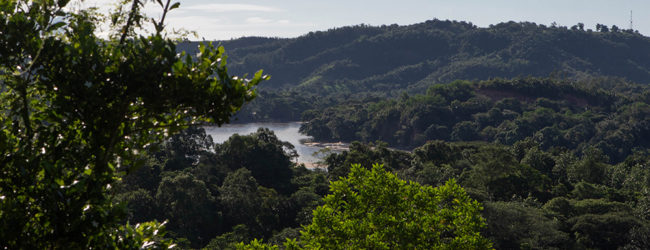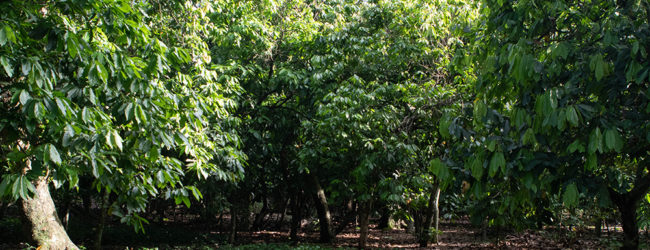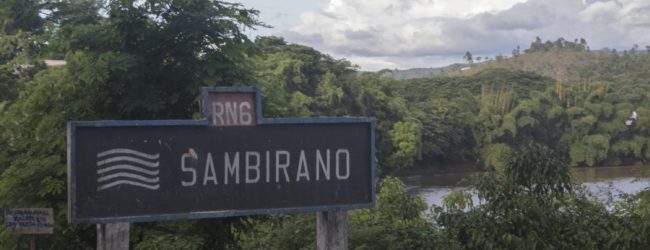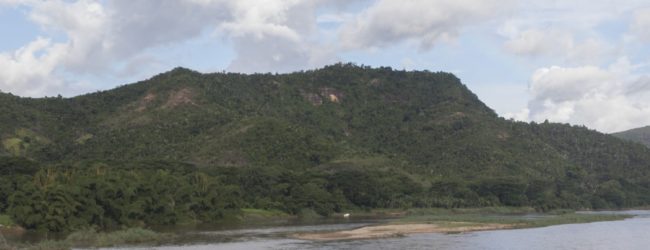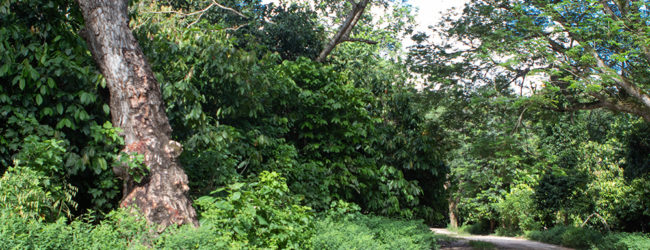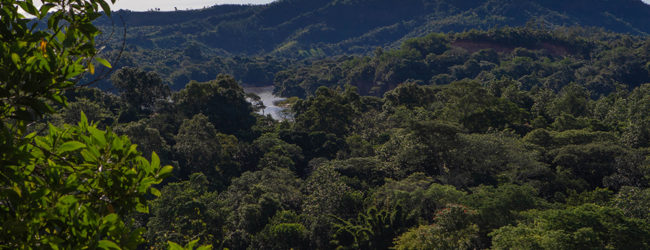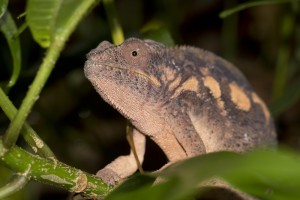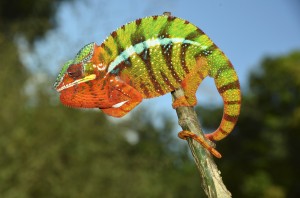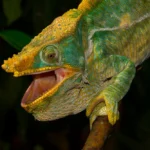Distribution of the local form Sambirano:
In the south of the city of Ambanja in northwest Madagascar, region Diana, the river Sambirano runs. Due to its size, it forms a natural border for panther chameleons and is the source of life in the region. The people here live mainly from cocoa and coffee plantations, which supply very high-quality raw materials throughout the river’s catchment area. At the mouth of the river Ramena into the Sambirano, you can find an area with mainly plantations and other secondary vegetation, where a special local form of panther chameleon can be found. The area is completely separated by the two rivers towards the neighboring local form Ambanja, and towards the sea, there is an extensive mangrove area.
Appearance of the local form:
Males look very similar here, mint green with marine blue cross bands and red dots.
Weight table
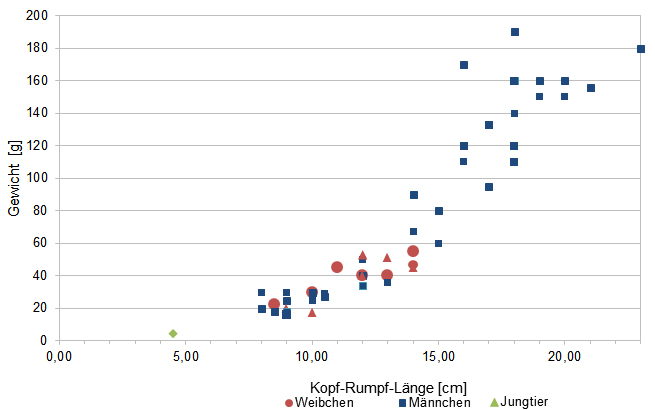
Gewicht = weight in grams, Kopf-Rumpf-Länge = snout-vent-length in cm, Weibchen = females, Männchen = males
Since 2015 we have been measuring the weights of chameleons we have found in Madagascar, as far as the animals (and our scales) are participating. In the long term, an average weight in relation to snout-vent-length (measured from the tip of the nose to the cloaca) for each species could be readable from as many measurements as possible. It is important to know that all weights were measured towards the end of the rainy season (= best food supply), so they are probably maximum weights in Madagascar. Triangular symbols in females do not mean pregnant, round symbols mean pregnant. In the case of Furcifer pardalis, contrary to our original assumption, there have been no serious differences in the ratio of SVL to the weight of the individual local forms.
| Jan | Feb | Mar | Apr | May | Jun | Jul | Aug | Sep | Oct | Nov | Dec | |
| Average temperature | 26 | 26 | 26 | 26 | 25 | 24 | 23 | 23 | 24 | 25 | 26 | 26 |
| Minimum temperature | 22 | 22 | 22 | 22 | 20 | 18 | 18 | 18 | 19 | 20 | 21 | 22 |
| Maximum temperature | 30 | 30 | 31 | 31 | 30 | 29 | 29 | 29 | 30 | 31 | 31 | 30 |
| Rain days | 29 | 26 | 24 | 15 | 8 | 7 | 7 | 8 | 7 | 10 | 18 | 25 |
We have collected the data given above over several years with thermometers and hygrometers at the finding places of the chameleons. "Average temperature" means that values of a whole month have been calculated to one average value per month. For example all measured minimum temperature values of February have been calculated to one average minimum temperature for February. In plain language, this means single peak values of a day may be a little higher or lower than the average minimum and maximum temperatures. It is possible that a location has an average maximum temperature of 29°C, but one day during that month it had 33°C or even 35°C there.
Ambanja has warm temperatures around 25°C all year long. In sunny places, temperatures may rise above 30°C. At night, temperatures drop to 20°C, during dry season they may even fall slightly below to 18°C.
During rainy season, it rains daily and a lot, so humidity raises quickly. But the region remains green even during dry season. It may rain a lot less, but precipitaion is still regular. Additionally, the location between rivers cares for a steady water supply of trees and other plants.
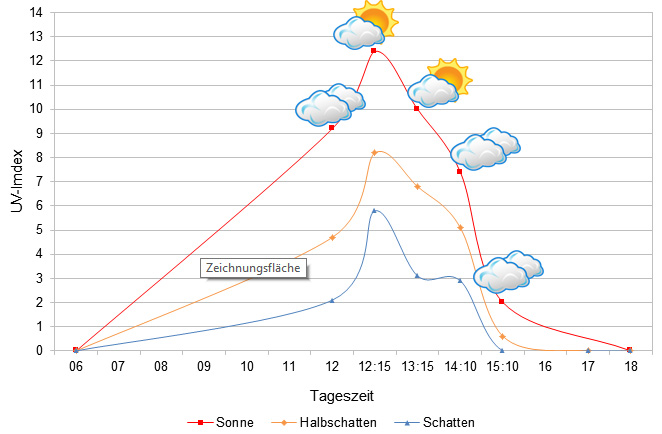
We have measured UVB data with a Solarmeter 6.5 in spring (beginning of April) at the peak of activity of chameleons in Madagascar. We always measured the values that a chameleon could maximally reach in its habitat.
Habitat:
The panther chameleons of this local form live mainly in cocoa and coffee plantations. Due to the cultivation of the plantations, there is usually no undergrowth, but there is a thick layer of leaves on the ground. Both coffee and cocoa trees are usually pruned at harvest height of a few meters. Due to the proximity to the Sambirano, it does not really get dry here all year round, the plantations remain green all year round. The panther chameleons here make effective use of all vegetation, from bushes to cocoa trees and the huge trees that shade the plantations. During the mating season, both genders can even be found on the knee-high, simple wooden fences that serve to limit the plantations.

